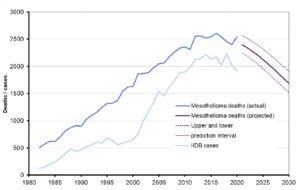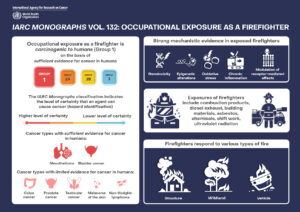The UN bodies responsible for global labour and health rights have rebutted statements by the global asbestos industry lobby that they “support” the continued use of chrysotile, the last remaining commercially traded asbestos fibre.
The damning responses from the World Health Organisation (WHO) and the International Labour Organisation (ILO) came after the International Chrysotile Association (ICA) claimed both WHO and ILO policies are pro-asbestos. “As far as this policy remains… it should contribute to support the pro-chrysotile parties,” an ICA briefing notes.
In a statement to Hazards, WHO responded: “The World Health Organisation reiterates its policy, which remains unchanged, that the most efficient way to eliminate asbestos-related diseases is to the stop the use of all types of asbestos.”
In an ILO statement responding to the ICA campaign, the UN labour rights body reiterated its long held position that “calls for the elimination of the future use of asbestos and the identification and proper management of asbestos currently in place as the most effective means to protect workers from asbestos exposure and to prevent future asbestos-related diseases and deaths.”
The ICA briefing was distribution at the June 2022 Rotterdam Convention meeting, where an official proposal to put right to know ‘prior informed consent’ requirements on chrysotile was again vetoed by just six pro-asbestos governments.
The ICA’s Rotterdam Convention briefing document argues without foundation that its pro-asbestos position is consistent with WHO and ILO policies. It notes: “As far as this policy remains… it should contribute to support the pro-chrysotile parties”.
ICA is opposed to a Right to Know (prior informed consent) requirement on chrysotile asbestos exports, despite this being the repeat recommendation of the Rotterdam Convention’s Chemical Review Committee (CRC).
In response, the ICA questions the impartiality and “credibility” of the CRC, implying it may have been unduly influenced by third parties. In display text, it notes: “The CRC should never allow itself to be influenced by third parties its deliberations.”
The ICA briefing document includes criminally dangerous claims of “no observable health effects… with low level exposure.”
This point is both patently untrue and deliberately deceitful, and is rebutted explicitly by WHO, which notes: “No threshold for adverse effects has been identified, and therefore it is not possible to establish safe levels of exposure.”
WHO also points out that in developing countries, which are now the target of ICA’s asbestos export promotional activities, awareness of the risks and potential for preventive action may be limited, and related cancers may be missed or misattributed.
Worldwide, many of the exposures responsible for asbestos related deaths today occur from unwitting and largely uncontrolled exposures during DIY, construction and maintenance activities, as opposed to during primary production.
Countries with asbestos bans in place for two decades are still seeing record or near record levels of asbestos related cancers, caused almost entirely by asbestos in situ.
WHO position on chrysotile asbestos. ICA website and ICA Summary for Decision-Makers.



